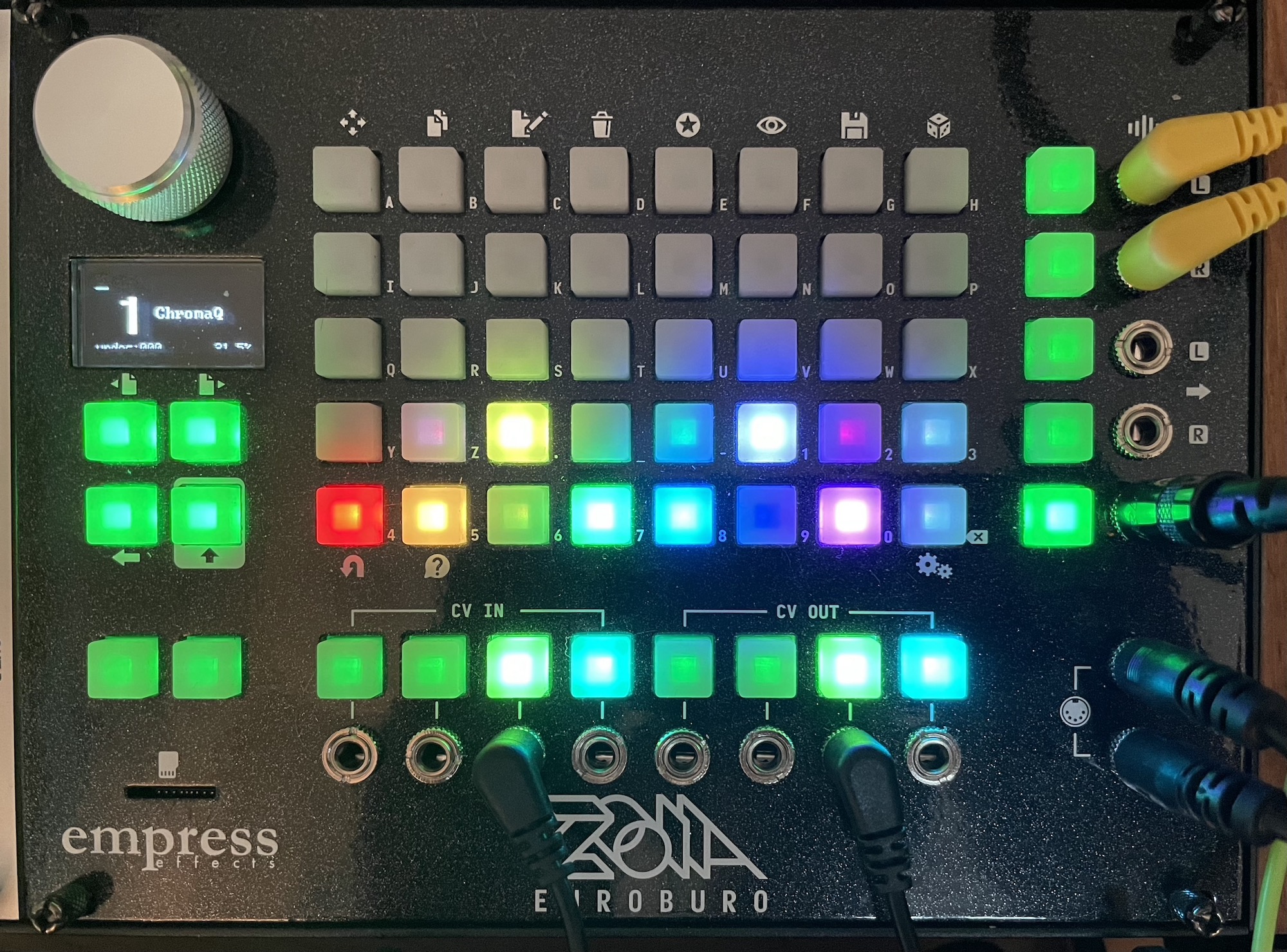ChromaQ: an Empress ZOIA Euroburo patch

The ZOIA has a built-in quantizer, which converts any old CV to one representing a note in a scale. It provides 4 scales (major and natural, harmonic, and melodic minor) in any of the twelve notes in 12TET, which is all well and good, but it’s not very playable.
So I put together a quantizer with a keyboard on the front page of the ZOIA to allow more playable quantization, a la Intellijel Scales. You can download it here.
Usage⌗
The ctrl page of the patch displays a keyboard (from C, inspired by chromatic mode on the Elektron Digi boxes). Push a key to light it and add that note to the scale. Push again to darken it, removing that note from the quantized scale.
Voltages on CV in 3 will be quantized to CV out 3, and voltages on CV in 4 will be quantized to CV out 4. Quantization is immediate (i.e., not clocked, as there is no clock input), and can be temporarily locked per channel with the white buttons to the right of the keyboard.
Notes, tweaks and Suggestions⌗
This patch was distilled from the basis of a patch I played for a while, using
the DFAM sequencer to drive a DFAM and a Mother 32 via MIDI; in its published
form, it’s meant as the basis for such a patch of your own divising. This is why
audio is passed through without effects, and why the top three rows of the
ctrl page are empty, for instance: that’s all free space for the rest of a
real patch. Quantization and audio bypass take less than 20% CPU, so there’s plenty
of room for additional processing.
The patch can be used in any number of ways:
- quantizing two hardware patches (for this, you might want to add external clock inputs on CV in 1 and 2, connected via inverters to the T+H modules per channel, to allow clocked
- using channel 1 to quantize a hardware synth patch while using channel 2 to quantize an internal generative patch
- quantizing input CV and sending it to MIDI
- and so on…
This is the basis of the main patch I’m playing these days on my main rack, which mainly just adds effects and some expressive handling of the DFAM’s velocity CV.
I plan to post the internals soon (once I’ve made an acceptable drawing of how
it’s put together). For those who’d like to dig into the patch, the key trick is
that each note button on the ctrl page is connected to an input switch that
selects either the value for that note (e.g. 0.0250 for C) or the value for the
previous switch in the cycle (the two quant casc pages); the output of each
switch is sent to a 12-way in switch per channel (quant ch1 and quant ch2
pages), selected by the input note from which the octave has been stripped; the
octave is then re-added after quantization.